2011 Hyundai Sonata GLS Review

After a vehicle launches and we get our second and more lengthy stint behind the wheel, we’re almost always less impressed with it. That’s not to say we’re unimpressed, but often a week spent commuting in a vehicle is, understandably, a more accurate test of day-to-day use than a quick spin on some twisty roads or an afternoon spent at the race track.
FAST FACTS
| 1. The Sonata is powered by a gasoline direct injection (GDI) 2.4L 4-cylinder that makes 198-hp and 184 ft-lbs of torque in GLS and Limited trim. |
| 2. Fuel Economy is rated at 22/35 mpg (city/hwy) with the 6-speed automatic. |
| 3. For just $750 a Popular Equipment Package adds items like a power driver’s seat with lumbar control and 16-inch aluminum wheels. |
| 4. Base GLS models start at just $19,195, or $20,195 for the automatic. |
This was not the case with the new 2011 Hyundai Sonata. In fact, we became more enamored with this mid-size Korean sedan from the evening we picked her up to the morning we dropped her off a week later. Few second dates go this well.
STILL HANDSOME, EVEN IN BASE TRIM
With the Sonata being introduced over the winter we’ve now been looking at it for half a year and we have to say its design is just as sophisticated as we once though, although reality has set in and we’re no longer swooning like we were a few months back. Over time all cars loose their initial wow factor, although as the Sonata is one of the first to feature an “outside the box” design, it’s certain to stay looking fresh for longer. Besides, our tester was the base GLS model, which is slightly less glamorous, with paint-matched grille and door handles rather than chrome. And it’s not often you can say a car looks good without add-on accessories like a skirt kit or bigger wheels.
Open the door and sit inside and it’s all just as nice as we remembered. OK, so Hyundai’s choice of seat fabric on base GLS models leaves something to be desired, and as a GLS we’re not getting a push button ignition, but we’re happy to report that the fancy looking center stack with the Volvo-inspired little man logo, cool blue display and sporty gauges remain intact.
Again, being a GLS model there’s no fancy “piano black” trim inside, but even the base accenting is a nice brushed metallic. This one small item not only shows that as a brand Hyundai wants to deliver quality products, but that as a company, it’s in touch with consumers – who are sick of plastic-coated plastic, made to look like wood.
If there’s anything we would improve on the interior of the car, it’s the look and feel of the buttons on the door – they just seem a bit too cheap and a slight step down from the rest of the car.
As for the rest of the cockpit, standard features abound with remote entry power locks and windows (with driver auto up/down), a tilt and telescopic wheel with cruise control and redundant audio controls. Plus, there’s Bluetooth compatibility, not to mention iPod, USB and auxiliary jacks. Safety features include six airbags, a tire pressure monitoring system, as well as stability and traction control.
Other items of note include an advanced trip computer, as well as an Eco indicator light to let you now when you’re being easy on the gas.
Our tester featured the bargain-priced $750 Popular Equipment Package with a power driver’s seat with lumbar support, chrome interior door handles, leatherette door panel inserts, automatic light control and 16-inch allow wheels. In other words – everything you want in a mid-size sedan.
MOST POWERFUL AND MOST EFFICIENT 4-CYLINDER IN ITS CLASS
Turn the key and the powerful 2.4-liter 4-cylinder comes to life, using direct-injection technology to produce 198-hp and 184 ft-lbs of torque – far more than any 4-cylinder in this segment. In fact, it’s enough power that a V6 has just become unnecessary – although Hyundai has decided to offer a powerful 274-hp turbocharged 4-cylinder model that will arrive soon.
Amazingly, along with the most power, the Sonata also gets the best fuel economy in the segment, thanks not only to direct-injection, but also a six-speed automatic transmission, the sedan’s swoopy aerodynamic shape and a curb weight that undercuts much of the competition by several hundred pounds. Hyundai rates the car at 22/35 mpg (city/highway) with the automatic transmission and 24/35 mpg with the manual. We averaged roughly 32 mpg.
Many automakers are using every trick they can think of these days to get optimum fuel economy and Hyundai is no different. The six-speed auto is reluctant to drop gears unless you really put your foot down. This requires a bit of a shift in how you drive your car, but the up-side is that with all the extra power, dropping gears isn’t necessary when a reasonable amount of acceleration is needed and by staying in the same gear the driving experience is kept silky smooth.
In regards to the engine, like on our first drive, we noticed a significant amount of chatter coming from the valvetrain – especially when the engine is cold. It’s nothing you can hear from inside the car, but with the windows down, stuck in traffic on the freeway you might be looking around for the VW TDI before you realize it’s you.
NEAR-LUXURY DRIVING EXPERIENCE
Once on the road, the steering is noticeably heavy – like most modern Hyundais. The seats are actually quite well bolstered for a mid-size sedan, and with a low seating position and the Sonata’s wide track you may find yourself pretending that this really is a Mercedes CLS, smoothly sailing down the highway or lurking through city streets. Adding to this feeling is the well-executed suspension setup that’s firm but also soaks up larger bumps when necessary. Overall, the driving experience of the Sonata is near-luxury.
And yet, toss it into a corner and the firm suspension rewards you, just as the tight steering eggs you on. This is a family sedan, so don’t expect a wild ride or an absence of understeer, but the lighter curb weight and well-sorted suspension setup lend themselves to a sportier ride than most.
One complaint we do have is with the car’s electric power steering system. Often at low speeds it takes a split-second for the proper amount of resistance to kick in, giving an unnatural and choppy feel.
The cabin is spacious – due in part to the car’s classification as a full-size sedan. Sure it competes against the mid-size crowd, but like the Accord it has enough interior space to bump it up a classification. And like a Honda, this Hyundai packs a lot of interior space into a smaller shell – something we particularly like. It’s not just a sign of good engineering, but it makes for a more efficient package. In the back seat there’s plenty of legroom and despite the sloping roofline, headroom is adequate – although just barely once your passengers hit the six-foot mark.
PRICING, PLUS ALTERNATIVES IN THE SONATA LINEUP
Currently the entry-level GLS model starts at under the magical $20,000 mark at just $19,195 – although that’s for the 6-speed manual transmission model, which isn’t likely to be popular. The expected $1,000 increase for the 6-speed automatic brings the total to $20,195 and adding in the Popular Equipment Package (as tested) is still just $20,945. And while a GLS with the Popular Equipment Package will likely make up the bulk of Sonata sales, those interested in leather and some added luxury items can get into a Limited model for $25,295, while the SE trim delivers items like 18-inch wheels and a dual exhaust system with the full 200-hp for $22,595.
THE VERDICT
We said it when we drove the new Tucson recently and we’ll say it again now. Maybe Hyundai is still just a hair shy of Honda and Toyota on quality, but what Hyundai is asking for its models these days represents a considerable bargain.
With great looks and an incredible ride, plenty of standard equipment and a 4-clinder engine that delivers the most power and best fuel economy; in the mid-size sedan segment, the Sonata is the definition of value. Scratch that, we’d still say it was the value leader with 10 less horsepower, one less mile per gallon and a slightly higher sticker price.
We’d call it to good to be true, but Hyundai already calls it the Sonata.
RELATED READING
2011 Hyundai Sonata: First Drive
2010 Toyota Camry Review
2008 Honda Accord EX-L Navi Review
2009 Kia Optima / Magentis
2010 Subaru Legacy 2.5i Premium PZEV
2010 Suzuki Kizashi: First Drive
2010 Dodge Avenger Review
2009 Chevrolet Malibu Review
2010 Nissan Altima 3.5 SR Sedan
2010 Ford Fusion Sport Review
2009 Mazda6 Review
LOVE IT
- Near-luxury ride quality
- Impressive fuel economy and power
- Bargain price
LEAVE IT
- Engine chatter louder than it should be
- Door-mounted controls look and feel a little cheap
- Electric power steering jerky

With AutoGuide from its launch, Colum previously acted as Editor-in-Chief of Modified Luxury & Exotics magazine where he became a certifiable car snob driving supercars like the Koenigsegg CCX and racing down the autobahn in anything over 500 hp. He has won numerous automotive journalism awards including the Best Video Journalism Award in 2014 and 2015 from the Automotive Journalists Association of Canada (AJAC). Colum founded Geared Content Studios, VerticalScope's in-house branded content division and works to find ways to integrate brands organically into content.
More by Colum Wood






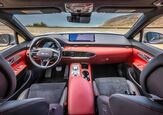
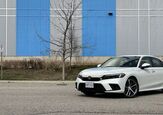










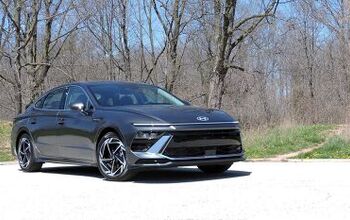

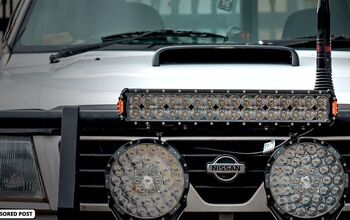



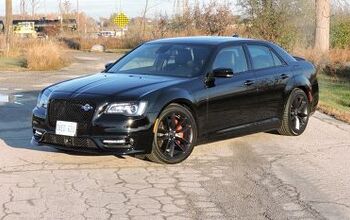





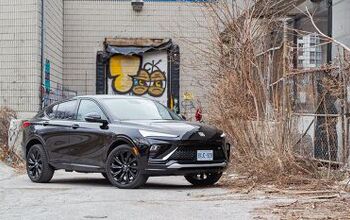
Comments
Join the conversation